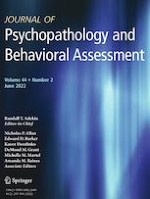22-11-2021
Risking Everything in Obsessive–Compulsive Disorder: An Analogue Decision-Making Study
Gepubliceerd in: Journal of Psychopathology and Behavioral Assessment | Uitgave 2/2022
Log in om toegang te krijgenAbstract
An experiment examined decision-making processes among nonclinical participants with low or high levels of OCD symptomatology (N = 303). To better simulate the decision environments that are most likely to be problematic for clients with OCD, we employed decision tasks that incorporated “black swan” options that have a very low probability but involve substantial loss. When faced with a choice between a safer option that involved no risk of loss or a riskier alternative with a very low probability of substantial loss, most participants chose the safer option regardless of OCD symptom level. However, when faced with choices between options that had similar expected values to the previous choices, but where each option had some low risk of a substantial loss, there was a significant shift towards riskier decisions. These effects were stronger when the task involved a contamination based, health-relevant decision task as compared to one with financial outcomes. The results suggest that both low and high symptom OC participants approach decisions involving risk-free options and decisions involving risky alternatives in qualitatively different ways. There was some evidence that measures of impulsivity were better predictors of the shift to risky decision making than OCD symptomatology.
